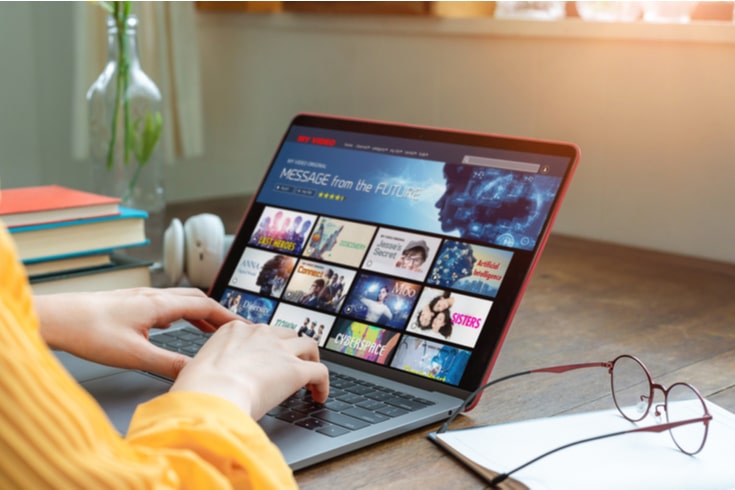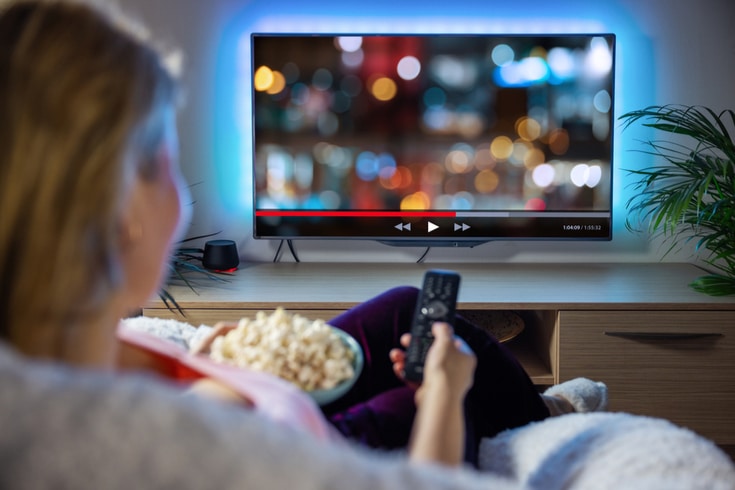Which Media is the Most Reliable? Explaining the Actual Usage of Media by Purpose

In “Internet Usage Time Surpasses TV Viewing Time for the First Time: Explaining the Actual Use of Media,” we discussed the overview up to “Usage Rate of Main Social Media Services/Apps, etc.” in Chapter 5 of the “2020 Survey Report on the Use of Information and Communication Media and Information Behavior” announced by the Ministry of Internal Affairs and Communications (Institute for Information and Communications Policy) on August 25, 2021 (2021). In this article, we will explain the overview from “Usage Rate of Video Sharing/Distribution Services, etc.” in the same Chapter 5.
Usage Rates of Video Sharing and Streaming Services
In Chapter 5, “Usage Rates of Video Sharing and Streaming Services,” we find that:
- The usage rate of “on-demand video sharing services” continues to be the highest across all age groups, exceeding 80% for the first time in this survey. When broken down by age, the usage rate of “on-demand video sharing services” exceeds 90% for those aged 10 to 40.
- The usage rate of “on-demand video streaming services” has increased across all age groups, with the usage rate for those aged 10 to 30 exceeding 50%.
This is the current situation.
Looking at the usage rates, the high usage of on-demand video sharing services (such as YouTube) continues from previous surveys. The usage rate across all age groups is 85.4%, exceeding 80% for the first time. The second most popular are on-demand video streaming services (such as Netflix and Hulu) at 46.3%, followed by on-demand broadcast program streaming services (such as NHK On Demand and TVer) at 22.2%. The usage rate of paid multi-channel broadcasting services (such as WOWOW, SKY PerfecTV!, and cable TV) is still only 13.1%, which is due to the lower usage rates among younger generations, with 5.8% for those in their teens and 7.5% for those in their 20s, compared to 18.8% for those in their 50s and 22.0% for those in their 60s. The monthly viewing fee of 2,530 yen (including tax) for WOWOW may be too high for teenagers and those in their 20s to bear on their own.
The usage rate of services across all age groups shows that YouTube is the most used across all age groups at 85.2%, with 96.5% for those in their teens and 97.2% for those in their 20s, and even 81.2% for those in their 50s. The second most popular is Amazon Prime Video, with a usage rate of 29.7% across all age groups, particularly 41.8% for those in their 20s and 41.6% for those in their 30s.
ABEMA has significantly increased to 25.4% among teenagers, and it will be interesting to see how much GYAO!, U-NEXT, and Hulu will increase in the future.

Media Usage by Purpose
Chapter 6 discusses media usage by purpose, considering three objectives: “To quickly learn about events and trends in the world”, “To obtain reliable information about events and trends in the world”, and “To obtain information about hobbies and entertainment”. We have surveyed which media – TV, radio, newspapers, magazines, books, the internet, or others – are used for these purposes.
- For “quickly learning about events and trends in the world”, the internet is most used by people in their teens to 40s, while TV is most used by those in their 50s and 60s.
- For “obtaining reliable information about events and trends in the world”, TV is most used in all age groups except those in their 20s. The use of “newspapers” increases with age, surpassing the internet in the 50s and 60s age groups.
- For “obtaining information about hobbies and entertainment”, the internet is most used in all age groups, exceeding 80% in the teens to 30s age groups.
These are the findings.
The media used “to quickly learn about events and trends in the world” is the internet for teens, with a ratio of 73.9% for the internet versus 23.9% for TV. As age increases, the proportion of TV usage increases.
However, when it comes to “obtaining reliable information about events and trends in the world”, TV is most used in all age groups except those in their 20s. Even in the 20s age group, where TV usage is low, the ratio of TV to internet is 42.3% to 43.2%. It is clear that “reliable information” is still obtained from TV.
The media used “to obtain information about hobbies and entertainment” is the internet for all age groups, with the lowest being 39.0% in the 60s age group.
For newspapers, the usage for “quickly learning about events and trends in the world” is almost 0%, but for “obtaining reliable information about events and trends in the world”, the usage is 15.5% for all age groups, and even 7.7% for the lowest age group, the teens. For “obtaining information about hobbies and entertainment”, the usage is 6.1% for all age groups, and 6.3% for teens. Although the usage rate of newspapers is low, it seems to play a certain role even for younger generations.
This is related to the following “Importance of Media / Trust in Media”.

Importance and Trustworthiness of Media
Chapter 7 discusses the “Importance and Trustworthiness of Media”.
- The “Importance as a Source of Information” is highest for the “Internet” among those in their teens to thirties, and for “Television” among those in their forties to sixties.
- The “Trustworthiness as Media” is highest for “Newspapers” among those in their thirties to sixties, while for those in their teens, the trustworthiness of “Television” is higher than that of “Newspapers”.
The “Importance” refers to how much each media is valued as a “means of obtaining information (source of information)” or as a “means of obtaining enjoyment”. Responses were collected using a five-point scale: “Very Important”, “Somewhat Important”, “Neither”, “Not Very Important”, and “Not Important at All”. For the calculation, the responses of “Very Important” and “Somewhat Important” were combined and represented as “Importance”.
As a result, the “Importance as a Source of Information” is 86.7% for Television, 52.8% for Newspapers, and 77.3% for the Internet across all age groups. Television scores high in all age groups, and there is not much evidence of a shift away from television even among those in their teens and twenties.
There is a significant age difference when it comes to Newspapers. The “Importance as a Source of Information” for Newspapers is 53.7% for those in their forties, 69.7% for those in their fifties, and 75.5% for those in their sixties, compared to 28.2% for those in their teens, 31.5% for those in their twenties, and 38.8% for those in their thirties. It is worrying to think about what will happen to newspapers in the future.
“Trustworthiness” refers to how much reliable information each media is believed to have. Responses were collected using a five-point scale: “Can Trust All”, “Can Trust Most”, “About Half”, “Can Only Trust a Part”, and “Cannot Trust at All”. For the calculation, the responses of “Can Trust All” and “Can Trust Most” were combined and represented as “Trustworthiness”.
As a result, the highest “Trustworthiness as Media” across all age groups is for Newspapers, at 66.0%, which is higher than both the Internet at 29.9% and Television at 61.6%.
This high level of trust in newspapers is seen in all age groups over thirty. Even in the twenties, both Television and Newspapers are at 54.9%. In the teens, although the trustworthiness of Television is said to be high, Television and Newspapers are at 65.5% and 62.7% respectively, which is not enough to conclude that “Television is higher”.
What should be noted is the low trustworthiness of the Internet. Even in the twenties, which has the highest score, it is only 36.2%, and it is around 30% in all age groups. The result was that although it is often used as a source of information, it is not trusted very much.

Changes in Home Time Due to the New Coronavirus
In this survey, we also conducted a study on “Changes in home time due to the spread of the new coronavirus infection” as a reference. As a result,
- Compared to a year ago (January of Reiwa 2 (2020)), 60.8% of all age groups responded that their home time “increased”
- The way they spent their increased time was mostly “hobbies and entertainment (including watching TV and playing games)” in all age groups, exceeding 80% in teenagers
It’s obvious, but “home time has increased” in all age groups. Interestingly, the proportion decreases as the age group increases. It can be considered that the home time was long before Corona.
The way they spent their increased time was mostly “hobbies and entertainment (including watching TV and playing games)” in all age groups. Although teenagers are the largest, the 60s are almost the same as teenagers.
Among “hobbies and entertainment (including watching TV and playing games)”, “watching TV” accounted for about half in all age groups, and what was particularly common in teenagers and 20s was “playing games” and “watching video posting/sharing services”.
“Watching news sites and streaming news” was 28.3% in all age groups and about 30% in those in their 30s and older. Although it’s not so high, it was only 15.5% in teenagers and 19.7% in those in their 20s. As for “reading newspapers”, while it’s 33.3% in the 60s, it’s only 1.4% in teenagers, so it can be said that younger generations hardly know the news other than on TV.
Summary: Survey analyzes media usage rates and generational gaps intensified by COVID-19.
We have explained the overview of the “2020 Survey Report on the Use of Information and Communication Media and Information Behavior” conducted by the Ministry of Internal Affairs and Communications (Information and Communications Policy Research Institute) in Japan. This survey continuously monitors the duration and time of use, usage rate, reliability, etc. of information and communication media, and clarifies the relationships between media and changes in usage patterns.
With the spread of the new coronavirus infection, internet shopping and video distribution have expanded, but it can be said that the generational gap has become more noticeable in various aspects.
Introduction to Our Firm’s Measures
Monolith Law Office is a legal office with high expertise in both IT, particularly the internet, and law. There are areas where legal checks are necessary when operating media. Our firm handles everything from strategic planning related to intellectual property in IT and internet-related businesses, and entertainment areas such as music and movies, to contract relationships and litigation. We also have experience and know-how in various tasks, from creating internal guidelines for companies regarding issues related to the operation of media, such as quotations, to conducting due diligence (DD) in M&A.
Category: General Corporate





















